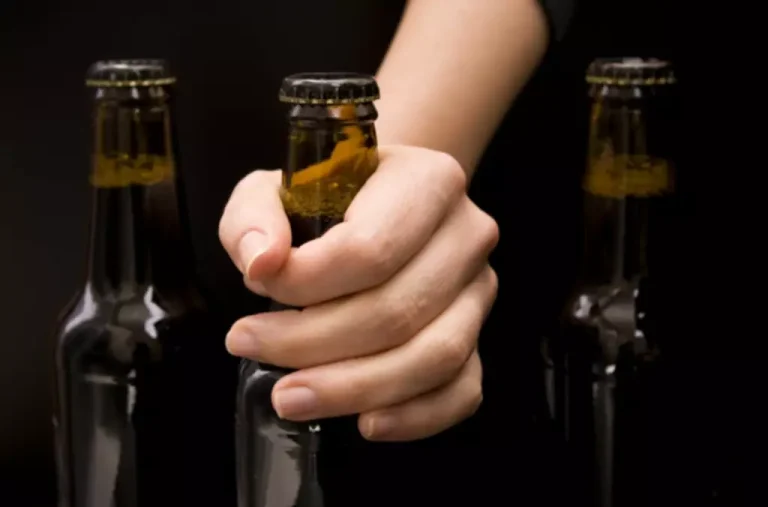
The survey results showed that people in committed relationships who use alcohol during intimacy were more likely to be sexually aggressive toward their intimate partners. According to the study, women who had partners that drank more experienced more intimacy but more conflict in their relationships, while men who drank at higher levels had more distrust of their partners. But this study was limited to couples in sub-Saharan Africa, and more research is needed. But there are ways you can recognize when alcohol might be negatively affecting your relationships — and when it may be time to get help. Here’s a snapshot of just a few organizations that may offer valuable support for families dealing with the effects of alcoholism. Several types of professional programs and levels of addiction services can treat alcohol use disorder, ensuring your loved one can seek one out that best fits their needs and lifestyle.
Concordant drinking and marital functioning
Postmortem study of alcoholics had identified pathology in white matter constituents and noted demyelination (Lewohl et al. 2000; Tarnowska-Dziduszko et al. 1995), microtubule disruption (Paula-Barbosa and Tavares 1985; Putzke et al. 1998), and axonal deletion. Other studies detected morphological distortion of cell extensions (Harper et al. 1987; Pentney 1991) and volume reduction arising from shrinkage or deletion of cell bodies (Alling and Bostrom 1980; Badsberg-Jensen and Pakkenberg 1993; De la Monte 1988; Harper and Kril 1991, 1993; Lancaster 1993). A striking feature of alcoholics is their continued drinking despite their knowledge of the untoward physiological or psychological consequences of their behavior. This characteristic became one of the diagnostic criteria for alcohol dependence specified in the Diagnostic and Statistical Manual of Mental Disorders, 4th Edition (DSM–IV) (American Psychiatric Association 1994).
- Getting treatment is essential and can help people begin to recover their normal functioning and improve relationships with their partners, children, and other loved ones.
- For example, the 2-week prevalence of heavy drinking declines after age 21 (Johnston, O’Malley, & Bachman, 1997), and marital satisfaction has a tendency to decline during the first several years of the relationship (Kurdek, 1998).
- In outpatient programs, you live a home while receiving many of the same services offered in inpatient treatment, such as individual and group therapy.
Signs that alcohol may be negatively impacting your relationships

People who find themselves in a romantic relationship with someone struggling with alcoholism may end up making excuses for their lack of attendance or improper conduct at social functions. They may find their options for other social interaction limited, and this may further be compounded by financial troubles or other problems related to the incidence of alcoholism. Heavy alcohol users may have trouble relating to teetotalers or those who do not share their propensity for drinking to excess, and they may attempt to convince friends or loved ones to join them in drinking. This can lead to additional problems as others experience the challenges faced by having a sufferer in their personal relationships. Alcohol misuse can have a serious detrimental impact on the health and well-being of individuals as well as their families. Getting treatment is essential and can help people begin to recover their normal functioning and improve relationships with their partners, children, and other loved ones.
What Are the Financial and Social Problems For Alcoholics?
Constant conflict or neglect can severely impact children of parents with alcohol addiction. They may experience loneliness, depression, guilt, anxiety, anger issues and an inability to trust others. As painful as it is for someone to live with alcohol use disorder, they aren’t the only ones affected. Their family members — especially children — are usually impacted by alcohol use, too. And even when these children become adults, it may continue to be a challenge to deal with their parent’s addiction and its lasting effects. Alcoholism follows a dynamic course, with alternating periods of excessive drinking and sobriety.
- Once the initial effects of alcohol wear off, it’s common to experience heightened depression, anxiety, and even anger and volatility.
- For example, Halford & Osgarby (1993) reported that over 80% of men and women in their sample reported frequent disagreements about alcohol consumption.
- A review of the literature found a significant relationship between alcohol and domestic violence — with one 2020 study in Australia citing alcohol as a factor in roughly 24% to 54% of family and domestic violence police reports.
- Some individuals may use alcohol consumption to excuse their actions, but the blame is usually misplaced.
- A loss of work income lowers social security contributions and contributions to employer-provided or independent retirement accounts.
- Keeping a distance will also prevent your loved one from influencing you to allow the addiction to continue or crossing boundaries.
All of these factors make it much more likely you’ll engage in activities that cause conflict within relationships. We do not receive any commission or fee that is dependent upon which treatment provider a caller chooses. Changes in your personality how does alcohol affect relationships can cause you to interact differently with the people around you — and not always for the better. Relationships thrive when you can effectively communicate with each other, but it can be hard to do that when you’ve been drinking.
What are the characteristics of adult children?
Husbands in concordant drinking couples, on the other hand, either reported negligible differences between groups (McLeod, 1993) or reported higher levels of satisfaction than alcoholic men who were married to nonalcoholic women (Perodeau & Kohn, 1989). Results from a recent study on husband-to-wife violence are consistent with these findings. Quigley and Leonard (2000) found an interaction between husbands’ and wives’ alcohol consumption, https://ecosoberhouse.com/ such that violence was lower if they both drank heavily than it was if the husband drank heavily and the wife did not. Another serious limitation of the current research is that very few studies assess effects of alcohol use prospectively (Leonard & Rothbard, 1999). First, establishing temporal precedence of alcohol use and abuse increases our confidence that there is a causal relation between alcohol and marital functioning.


Several methodological weaknesses limit our ability to draw strong conclusions about the nature of the relation between alcohol use and marital interaction. First, the most disconcerting problem in this literature is the relatively small samples that were employed (see Table 1B). While quantitative research suggests that researchers need at least 126 total participants to have enough power to detect a moderate effect size (Cohen, 1988), many more participants are needed if two- or three-way interactions are being tested. Sample sizes in the marital interaction literature range from 8 to 135, with the mean sample size of 73, making it difficult to detect main effects, let alone two- and three-way interactions.
- If you or a loved one is struggling with a substance use disorder and needs help finding treatment, you can find care close to you using our provider directory.
- Three other studies found similar results, indicating that men who were more frequently drunk were more likely to be verbally and physically violent toward their partners (Coleman & Straus, 1983; Hutchinson, 1999; Kantor & Straus, 1989).
- Differences in marital interaction behaviors between different subtypes of alcoholics have not been tested as often in the marital interaction literature.
Effects of Alcohol on the Brain
- Although this is a conceptual rather than empirical typology, it is consistent with some empirically derived alcoholic subtypes (Epstein et al., 1995), and has been useful in identifying subgroups in the marital functioning literature.
- “Blaming yourself for your partner’s drinking will cause undue feelings of guilt and shame,” explains Dalton.
- Sample sizes in the marital interaction literature range from 8 to 135, with the mean sample size of 73, making it difficult to detect main effects, let alone two- and three-way interactions.